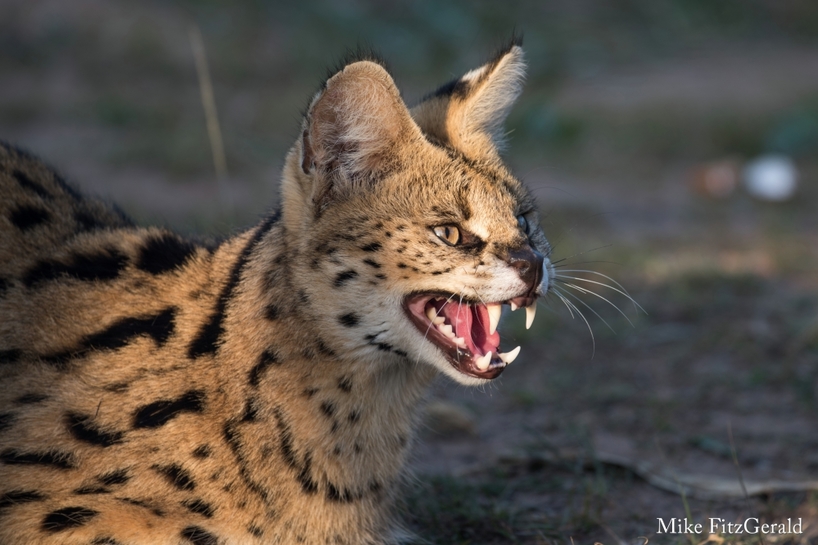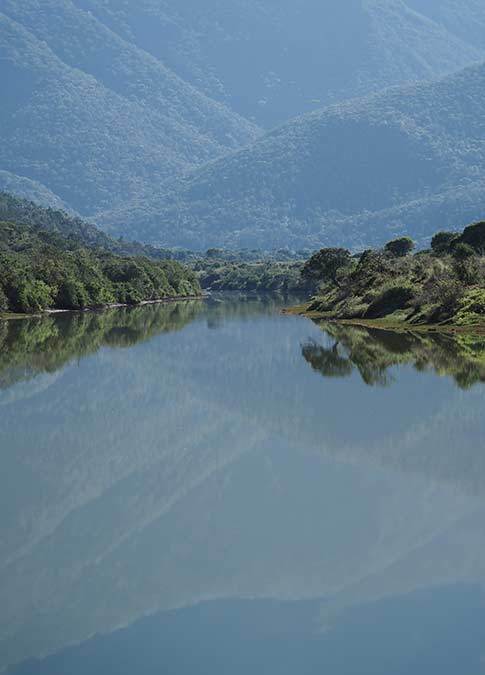Serval Reintroduction

The serval, a medium-sized spotted wild cat, became completely extinct from the Eastern Cape over the last century, mainly due to habitat loss and hunting. Kariega Game Reserve and the Kariega Foundation have been working together since 2012 to reintroduce this rare and indigenous species to our conservation area.
Kariega Serval Reintroduction Programme
Kariega Game Reserve was one of the first private game reserves to reintroduce the serval into the Eastern Cape. The aim is to reestablish a growing serval population in the area. The initial serval reintroduction was in October 2012 when two males were released. Two female servals were reintroduced in April 2013. These two reintroductions did not result in any breeding pairs setting up their territory on the reserve.
Further research resulted in an adjusted reintroduction plan and two serval pairs were brought onto the the reserve in early 2017. The two breeding pairs were set up in large natural enclosures in two separate locations on the reserve. They are cared for by passionate Kariega conservation team and the Kariega Conservation Volunteers.
Now that the servals are settled on the reserve we hope that the females will have kittens shortly. Once old enough, these kittens will be released onto the reserve. As these servals were born in the area we hope that they will establish their territories nearby. Only time will tell if this will happen as planned as animals don't always have the same plans as us!
Spotting a Serval
The serval is one of ten indigenous African wild cats. Three other small wild cats are found in South Africa, namely the caracal, African wild cat and the black-footed cat. Lion, leopard and cheetah are usually more popular sightings than their smaller cousins! The other three indigenous wild cats are the sand cat, golden cat and jungle cat.
Servals have very long legs, the longest of all cats relative to their body size. They use their legs to jump (sometimes over three metres) and run very fast (up to speeds of 80 kilometres per hour) to catch their prey. Their long legs and neck also allow the serval to see over tall grass. Their ears are also used to detect prey, even those burrowing underground.
Servals have been known to dig into burrows in search of underground prey and to leap into the air to grab birds in flight. While hunting, the serval may pause for up to 15 minutes at a time to listen with eyes closed. The serval's pounce is a distinctive and precise vertical hop. It is able to leap up to 3.6 metres horizontally from a stationary position, landing precisely on target with sufficient force to stun or kill its prey upon impact. Servals eat birds, snakes, lizards, frogs and rodents.
Read more information on servals at Kariega.
Rare Species Reintroductions
Both the Kariega Foundation and Kariega Game Reserve are recognized as leaders in well-researched reintroductions of endemic and rare species in the Eastern Cape, and are also against unsavory hunting practices that still persist in the province. Our additional current research and reintroduction projects include brown hyena, honey badgers, barred owlets and rhino.
Please visit our Kariega Foundation page for a full list of conservation and community projects.
We hope to share the good news when a litter of serval kittens are born. We post regular updates on our Facebook page, via Twitter and Instagram. Please connect with us.









